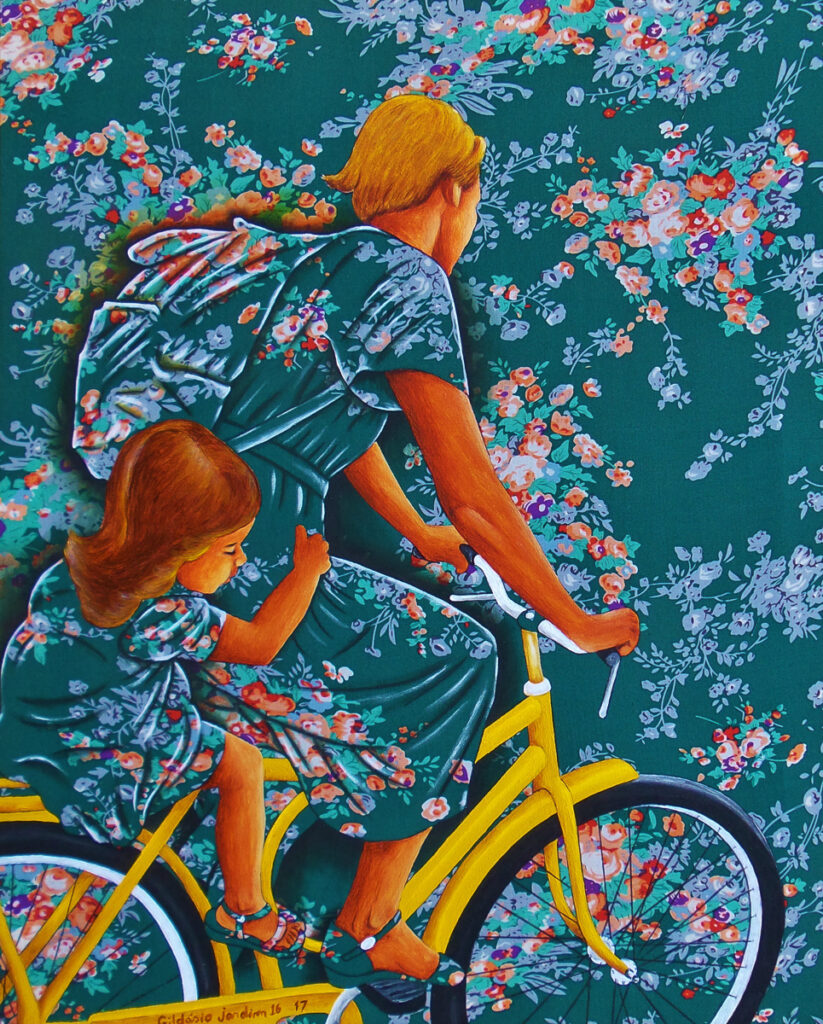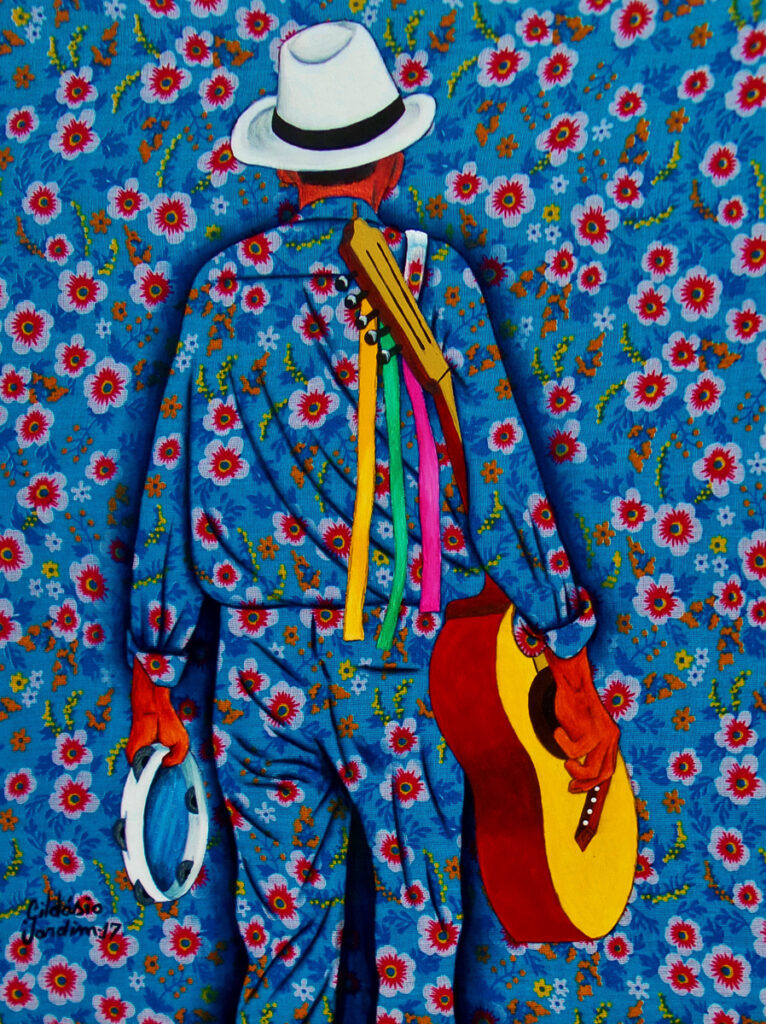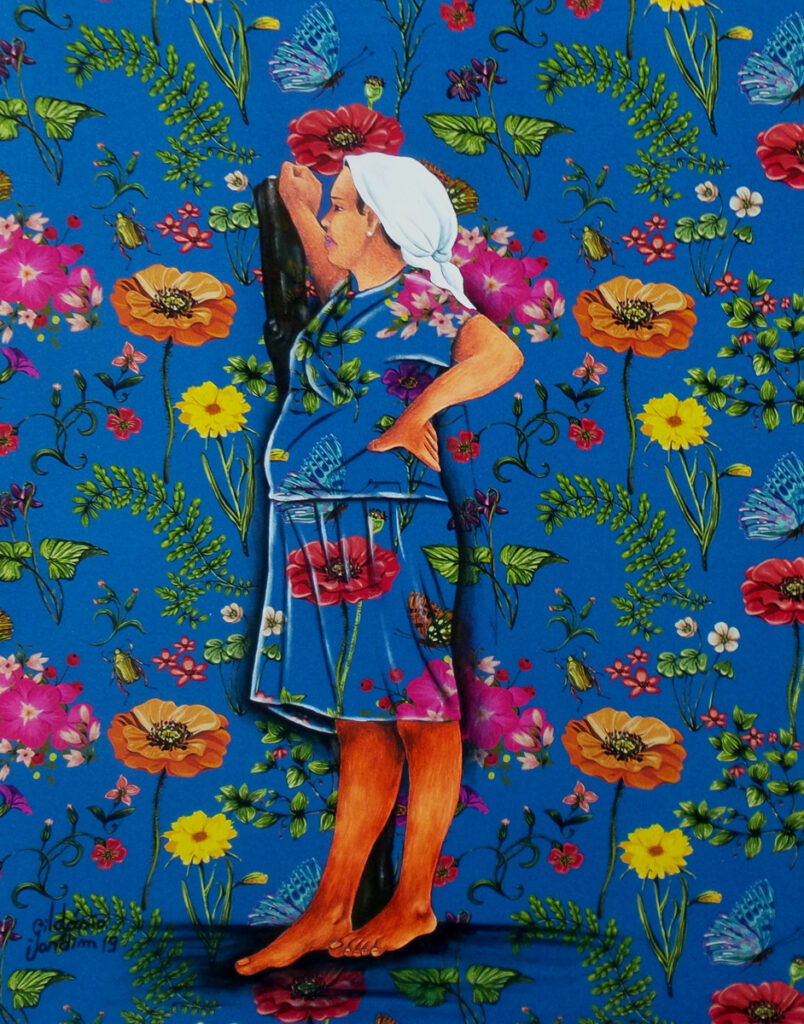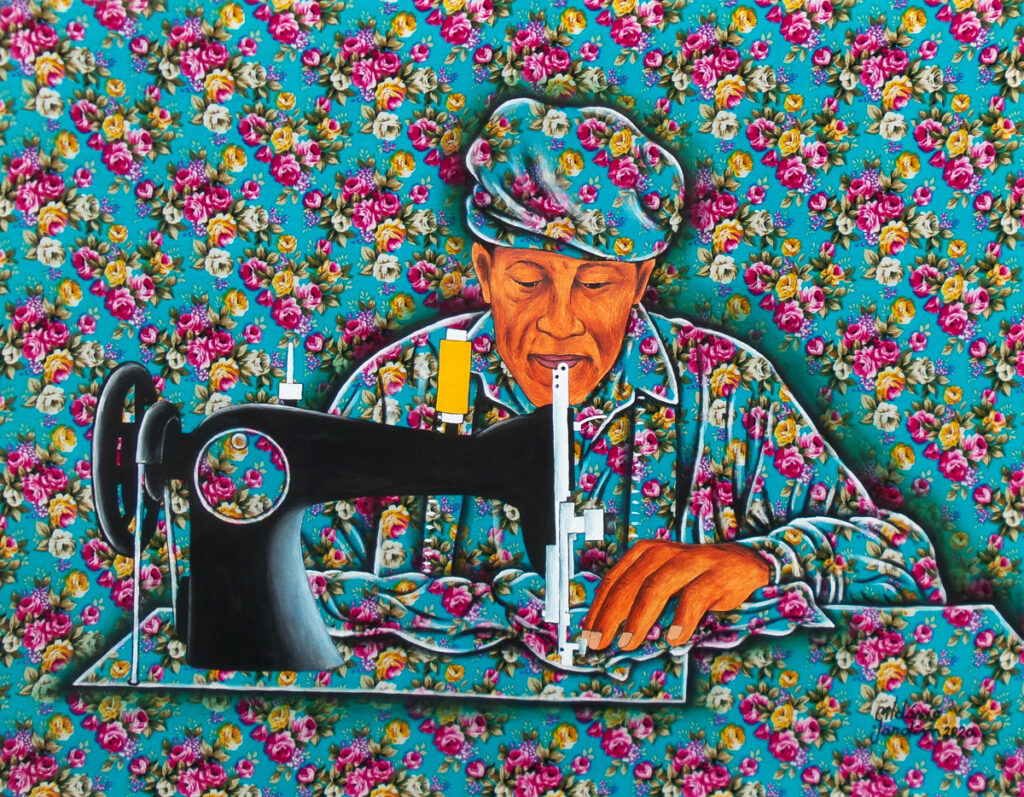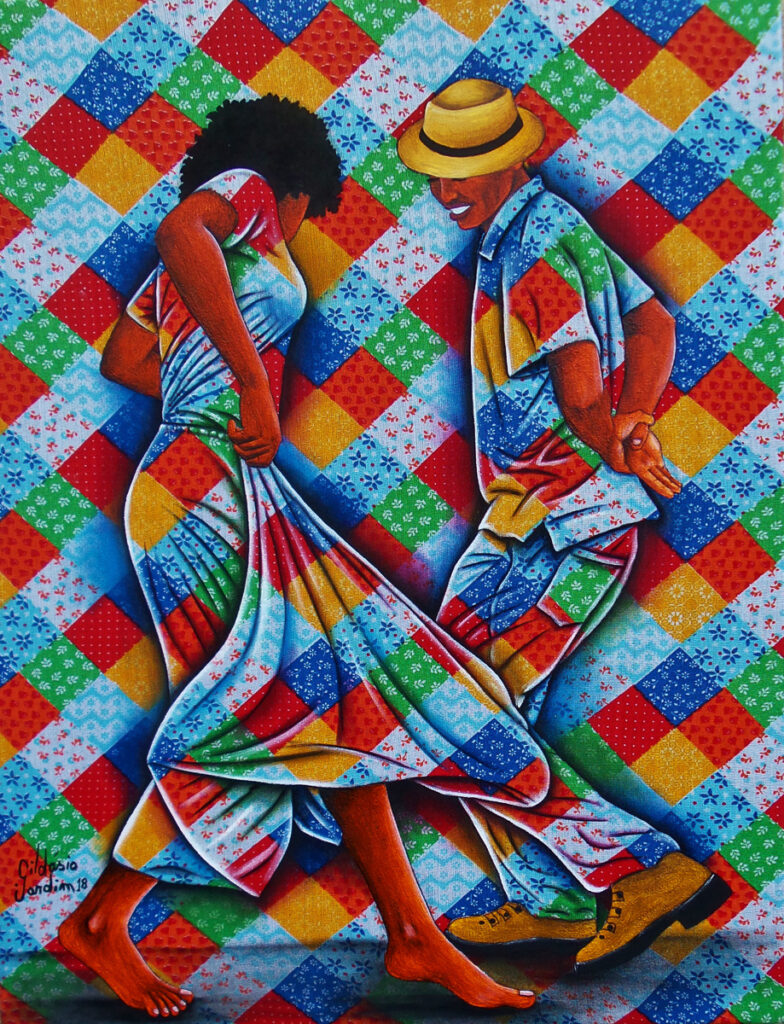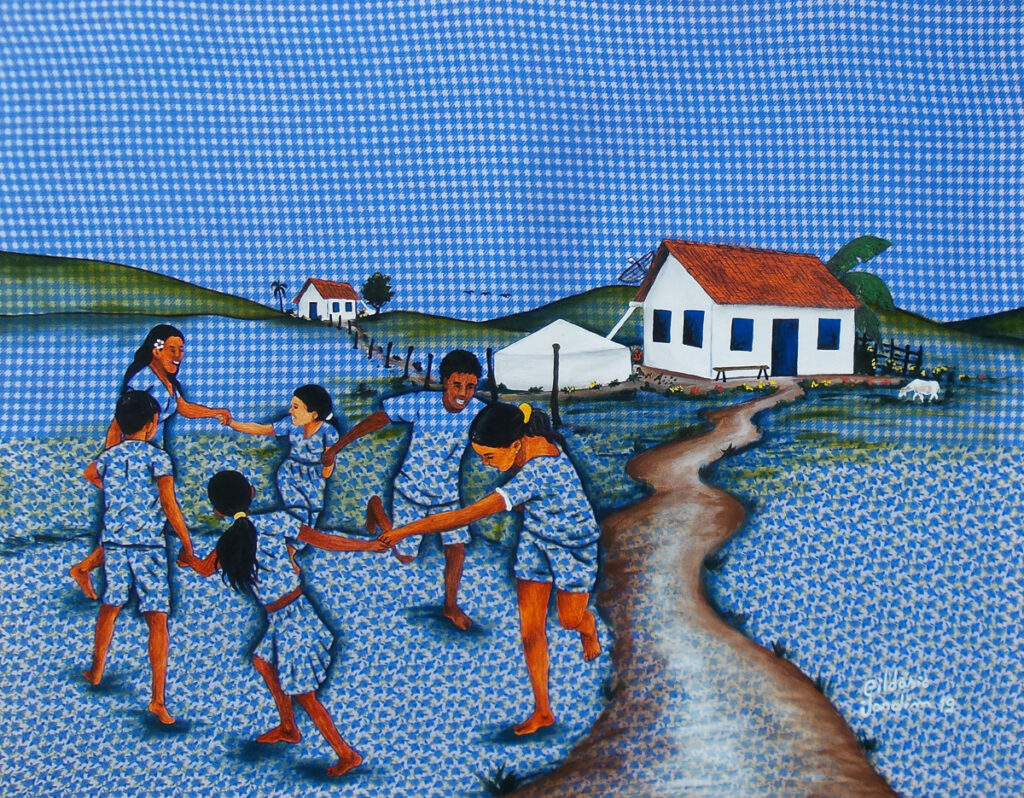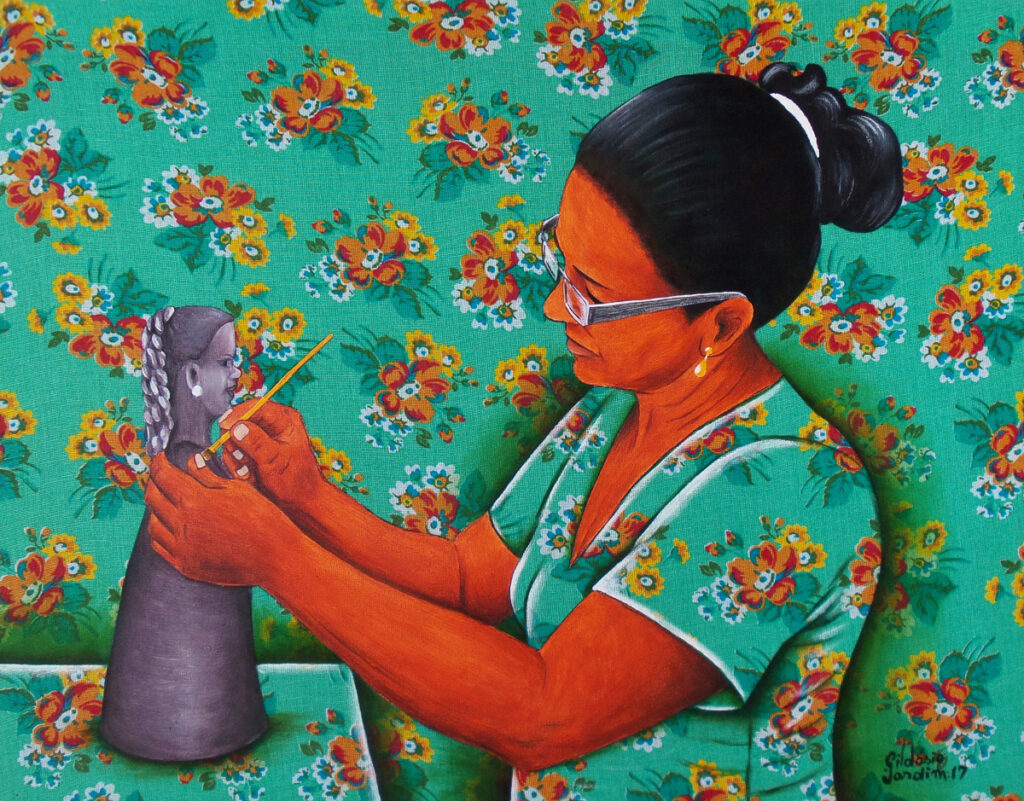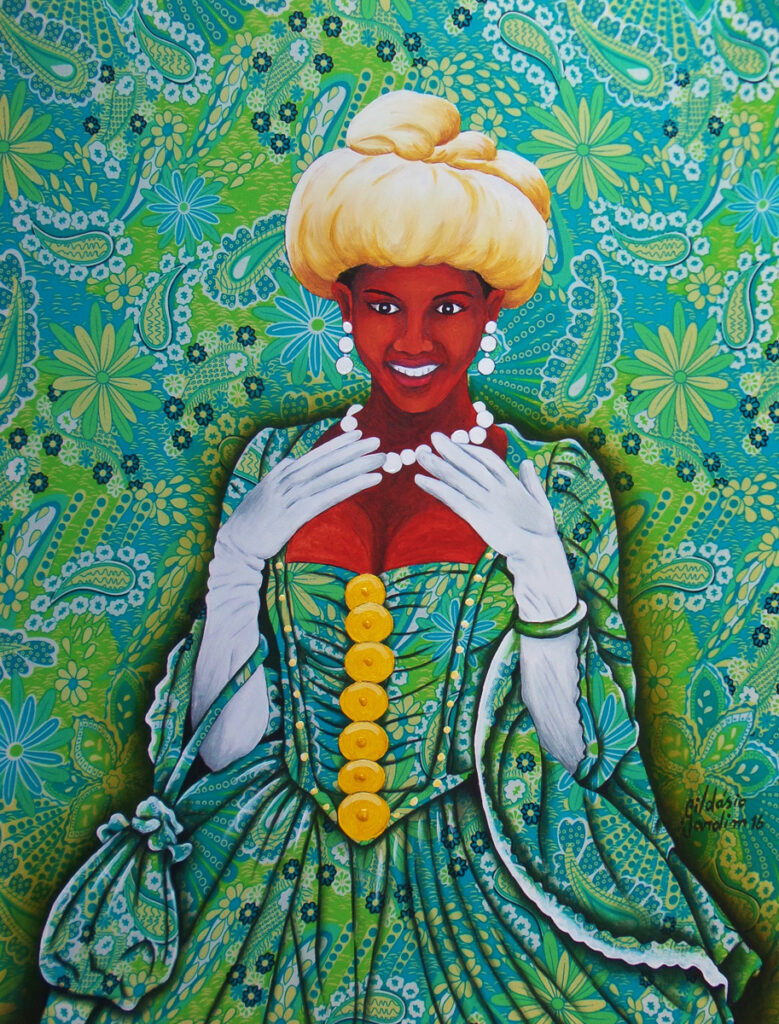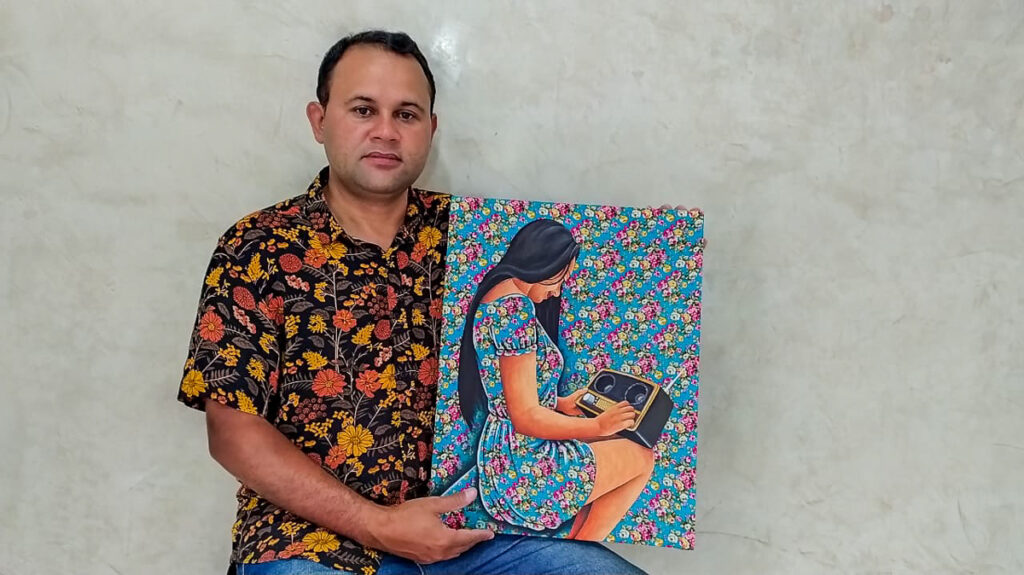
Gildásio Jardim
Gildásio Jardim relates a remarkable life story, reflecting the experience of a tiny rural community in paintings that magically blend with real life.
(A message to the reader.)
The place where I grew up was surrounded by stories, grimacing faces and voices with strong accents. Also the smell of the kitchens, the pen with the animals singing in the yard, the parrot, the dancing turkeys, the cow. The Folia de Reis parties (a popular Brazilian folk festival), the Catholic prayers in the countryside, almost blasphemous because they did not follow the rules, but with much faith. The people sang a rosary at the funerals that expressed beauty and sadness at the same time. The radio where my father listened to old guitarists also contributed to a kind of spiral of meanings that formed my person, which I try to put all back into my painting.
- Gildásio Jardim, Bicileta Encantada
- Gildásio Jardim, Sao Joao, 2013
- Gildásio Jardim, A Caminho da Folia de Reis, 2017
- Gildásio Jardim, Assuntando o Tempo
My name is Gildásio Jardim. I was born, on 10 July 1981, in Brazil, in the city of Joaíma, in Minas Gerais. At the age of ten, we moved to a rural community called Abelha Brava that is part of a region called Jequitinhonha. As an adult, I was aware of living in this valley with more than fifty municipalities, each of which is very distinctive in space and aesthetics. Jequitinhonha is the gateway to the northeast of Brazil, whose semi-arid biome presents vegetation called caatinga, which is dry and hard, but also beautiful. From within it, I met several characters, the way of thinking and acting inspired my canvases.
I started drawing when I was about seven years old. I was only literate when I was eight. I drew on dirt roads, in the sand, and in the notebooks that my father bought to make cigarettes. Also on cardboard. I had no idea what a canvas was. Someone told me that canvas could be a fabric stretched over four pieces of wood. It was then that I thought: “If I can build my carts, I can make a canvas like that ”. I started to build my own canvas using raw cotton and leftover wood.
- Gildásio Jardim, Alfaiate, 2020
- Gildásio Jardim, Danca Quilombo Marambaia, 2018
- Gildásio Jardim, Cena do Jequintinhonha, 2019
But it was only when I was 13 that I had access to paints. As I didn’t know anyone who painted or had any knowledge of any technique, I had to experiment with any paint that I found. So, as I didn’t have the opportunity to take any painting course, I invented my first paintings.
Painting was a need for me to express what I saw and felt. At first, it was just decorative: landscapes, flowers and animals, which was well received by everyone in my city. When I entered the geography faculty, in the city of Joaíma, subjects related to the course and philosophy and sociology fascinated me. These disciplines, and FESTIVALE, a local art festival, helped me to expand my horizons and understand my own culture. I learnt about the Jequitinhonha Valley and the popular culture of Minas Gerais and northeastern Brazil. I try to approach political themes in my works because I believe that this is one of the artist’s functions: to reflect publicly and artistically about the context that surrounds him.
- Gildásio Jardim, Ceramista do Jequitinhonha, 2017
- Gildásio Jardim, Presepio do Sertao, 2018
- Gildásio Jardim, Chica da Silva
In my own painting technique, I make the canvases with printed fabrics. I use acrylic, fabric paint, latex paint and liquid dye. For the canvas, I use wood and printed fabrics, such as tricoline, calico, denim. I paint in 3D, everyday scenes. The goal is to cause a fusion between the characters of my universe with the colors of each pattern. From there I try to get a character or scene from popular culture.
I also wanted to reference the cheetah with polka dots and flowers that women wore in my memories of the past, and the cheetah with a plaid that were men’s shirts. In fact, this fabric was synonymous with poverty.
However, it was also a very beautiful thing, which reminds me of the joy and simplicity of my people. Therefore, the way men and women from my rural childhood community dress was a source of enchantment for my imagination. It is like collecting flowers from fabrics, my art.
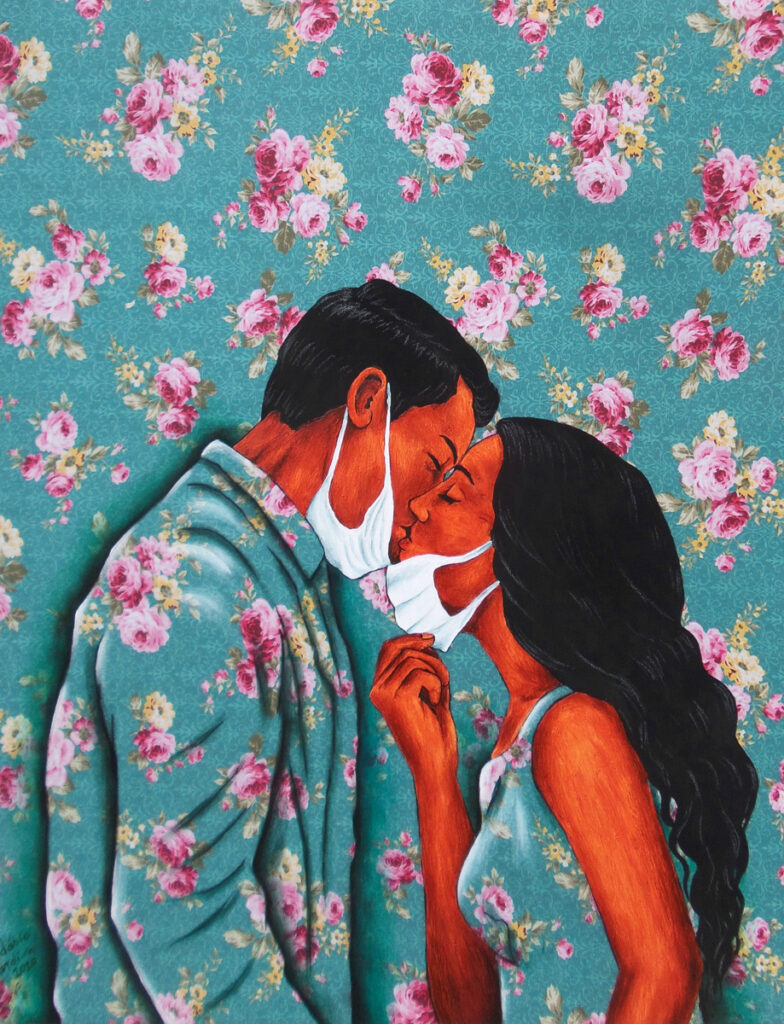
Gildásio Jardim, Coronavirus, 2020
Heloisa Pires Lima writes about his work
I got to know Gildásio Jardim’s work based on cheetah, the cheap and flowery cotton fabric, which is a very popular pattern for the simple people of the country. His works are so beautiful, I have been inspired to write short stories about some of them.
The first time I saw the paintings, I saw a mix between the magical and realistic. The works have a deep social dimension loaded with memories of the places where the artist lived. In other words, the dynamics of time are there to value the life of the community, whether with delight or denunciation.
Above all, they belong to a place where the Afro-descendant origin is very present. This kind of three-dimensional artistic insight picks flowers that give life to the talent and sensitivity of a visual expression of the interior of Brazil.
See YouTube channel
Author
 Heloisa Pires Lima is an anthropologist and author of more than 20 works for young readers.
Heloisa Pires Lima is an anthropologist and author of more than 20 works for young readers.
In Portuguese
O jardim das pinturas de Gildásio
O lugar onde eu cresci era rodeado de causos, trejeitos, falares com sotaques bem característicos. Também o cheiro das cozinhas, do curral com os bichos cantando no terreiro, papagaio, perus dançando, vaca. As festas de Folia de reis, as rezas católicas da zona rural, quase que blasfêmias porque não seguiam muito o padrão, mas com muita fé. O pessoal cantava o terço nos velórios que eram, ao mesmo tempo beleza na tristeza. O rádio onde meu pai escutava violeiros antigos também contribuiu para uma espécie de espiral de sentidos que foi formando a minha pessoa que, tenta recolocar isso tudo na minha pintura.
Meu nome é Gildásio Jardim. Eu nasci, em 07/10/1981, no Brasil, na cidade de Joaíma, em Minas Gerais. Com dez anos nos mudamos para uma comunidade rural chamada Abelha Brava que faz parte de uma área geográfica chamada Jequitinhonha. Só adulto fui ter consciência de viver nesse vale com mais de cinquenta municípios que é muito expressivo como espaço e como estética. Na paisagem brasileira é a porta de entrada para o nordeste brasileiro cujo bioma semi árido apresenta uma vegetação seca e dura chamada caatinga, mas bonita também. De dentro dela é que conheci vários personagens, o jeito de pensar e agir inspiraram telas.
Comecei a desenhar com uns sete anos e só fui alfabetizado aos oito. Eu desenhava nas estradas de terra, na areia, e nos cadernos que meu pai comprava pra fazer cigarro. Também em cartolinas. Eu desconhecia o que era uma tela. Alguém lhe falou que tela seria um tecido esticado em quatro pedaços de madeira. Foi então que pensei: “se eu consigo construir meus carrinhos, eu consigo fazer uma tela dessa”. Eu comecei a construir minhas próprias telas usando algodão crú e restos de madeira serrada.
Mas foi só aos 13 anos que eu tive acesso às tintas. Como eu não conhecia ninguém que pintasse e nem tinha conhecimento sobre técnica alguma, tive que me virar, fazer experimentações com a tinta o que encontrava. Assim, como não tive a oportunidade de fazer nenhum curso de pintura, inventei os meus primeiros quadros.
Pintar era uma necessidade minha de expressar o que eu via e sentia. No início era só decorativa, paisagens, flores e animais, o que era bem recebido por todo mundo em minha cidade. Quando entrei na faculdade de geografia, na cidade de Joaíma, temas ligados ao curso e à filosofia e sociologia me fascinaram Essas disciplinas, e o FESTIVALE, um festival de arte local, me ajudaram a olhar mais e perceber minha própria cultura em séries sobre as vivências no Vale do Jequitinhonha e, da cultura popular de Minas Gerais e do nordeste brasileiro. Procuro abordar temas políticos em minhas obras, pois acredito ser essa uma das funções do artista: refletir publicamente e artisticamente acerca do contexto que o cerca.
Em minha própria técnica de pintura, confecciono as telas com tecidos estampados. TÉCNICA: Acrílica, tinta p/ tecido, tinta látex e corante líquido.Para as telas eu uso madeira e tecidos estampados, como tricoline, chita, brim. Pinto em 3D, cenas cotidianas. O objetivo é provocar uma fusão entre os personagens do meu universo com as cores de cada estampa. Dali tento tirar um personagem ou cena da cultura popular. Eu também queria referenciar a chita com bolinhas e florzinhas que as mulheres vestiam em minhas lembranças do passado, e as chitas com xadrez que eram as camisas dos homens. Na verdade, esse tecido era sinônimo de pobreza. Contudo, também era uma coisa muito bonita, que me remete a alegria e a simplicidade da minha gente. Portanto, o modo dos homens e mulheres se vestirem desde a minha comunidade rural de infância foram a fonte encantada para o imaginário. É como recolher das flores dos tecidos, minha Arte.
✿
Gildásio Jardim é um artista brasileiro, da região do Jequitinhonha no estado de Minas Gerais. Eu conheci o trabalho dele tendo por base a chita, o tecido de algodão florido e barato. Por isso, muito popular a vestir as gentes simples do país. Hoje, ressignificado, frequenta as rodas que recuperam belezas singulares. Nas mãos de Gildásio ela entrou como solução para a manufatura de telas, algo desconhecido por ele mas do qual ouvira falar. Seria um suporte de madeira prendendo um pano. E aí acontece o encontro extraordinário que vai além da praxe. O resultado inovador reuniu o desejo de desenhar, natural desde a infância, o suporte que materializa a imaginação e, o arranjo entre tintas e estampas. Tão belas que já me inspiraram a escrever contos sobre algumas delas.
A primeira vez que vi as pinturas, enxerguei um mix entre serem mágicas e, ao mesmo tempo, tão realistas nas cenas escolhidas para registro. As obras têm uma dimensão social profunda carregadas de memórias dos lugares por onde o artista morou. Ou seja, a dinâmica do tempo está ali para valorizar a vida da comunidade seja deleite ou denúncia. Sobretudo, um território onde a origem afrodescendente é bastante presente. Essa espécie de insight artístico tridimensional vai colhendo flores que dão vida ao talento e à sensibilidade de uma expressão visual do interior do Brasil que traz jardim na sua assinatura.
(Heloisa Pires Lima- antropóloga, autora de mais de 20 obras para jovens leitores)

